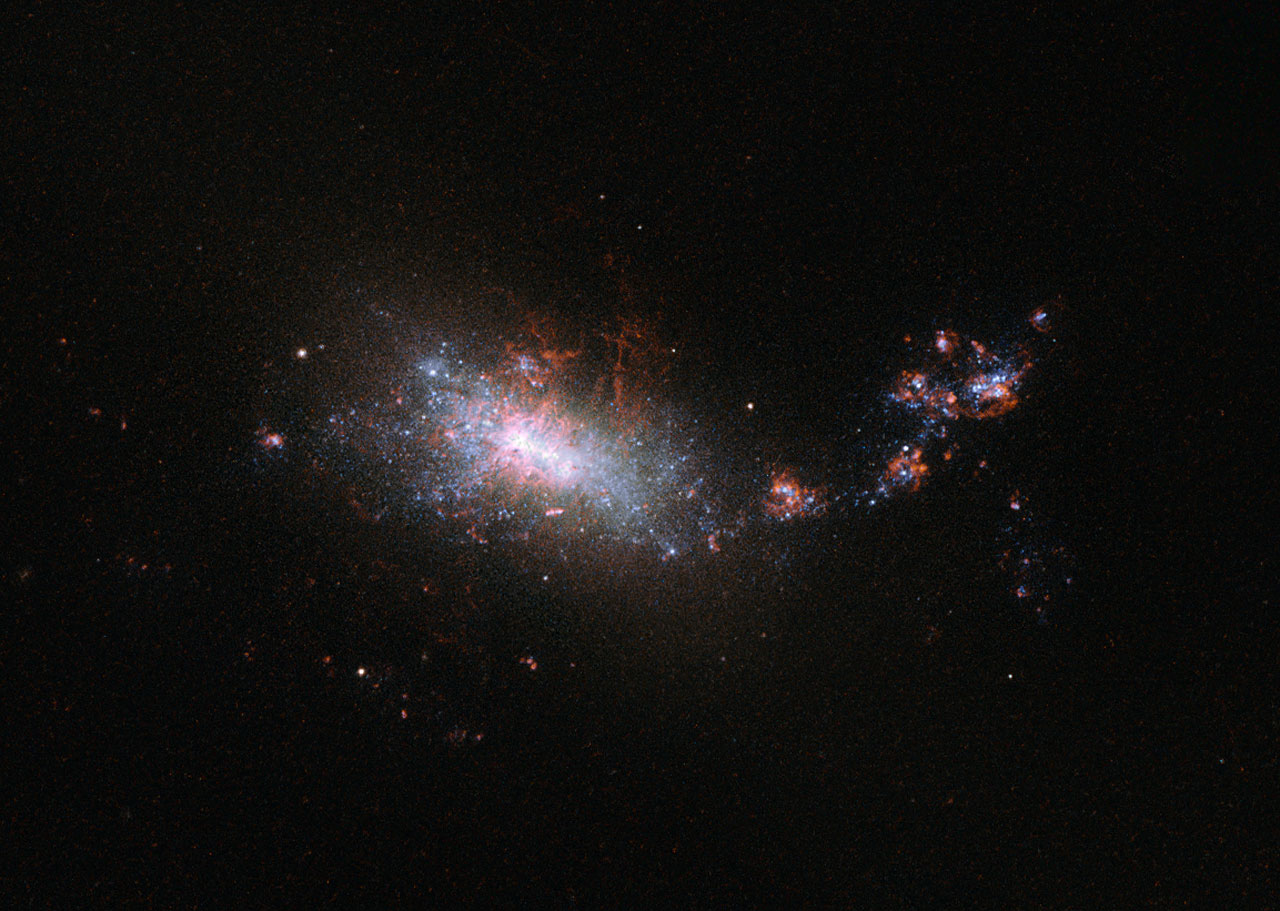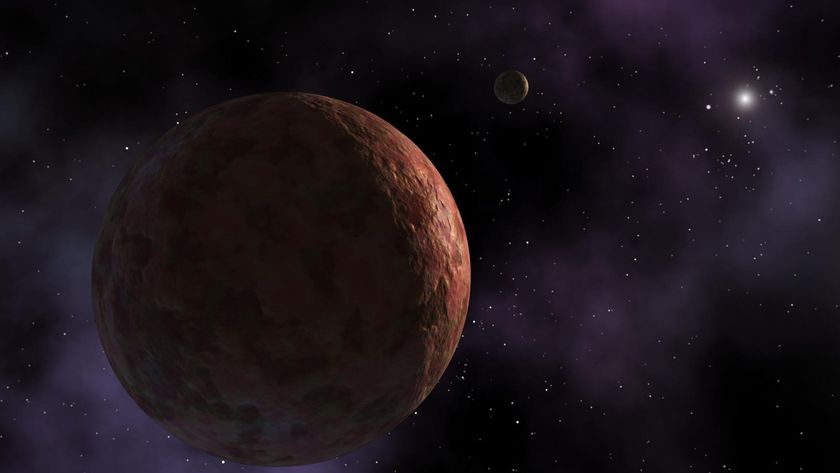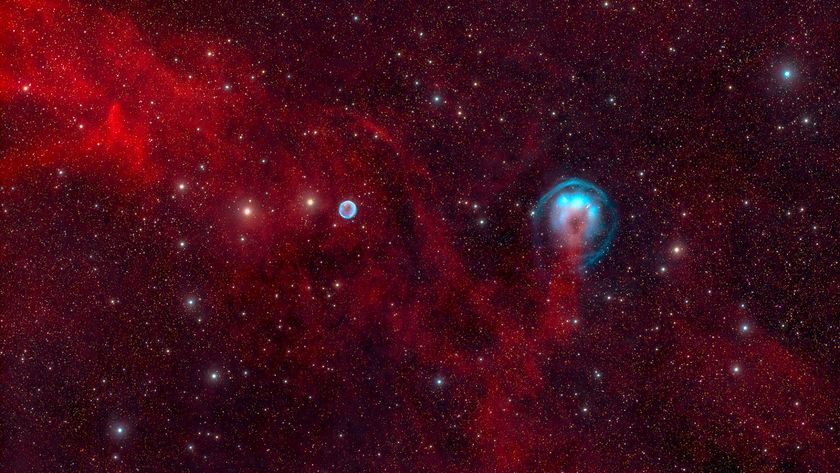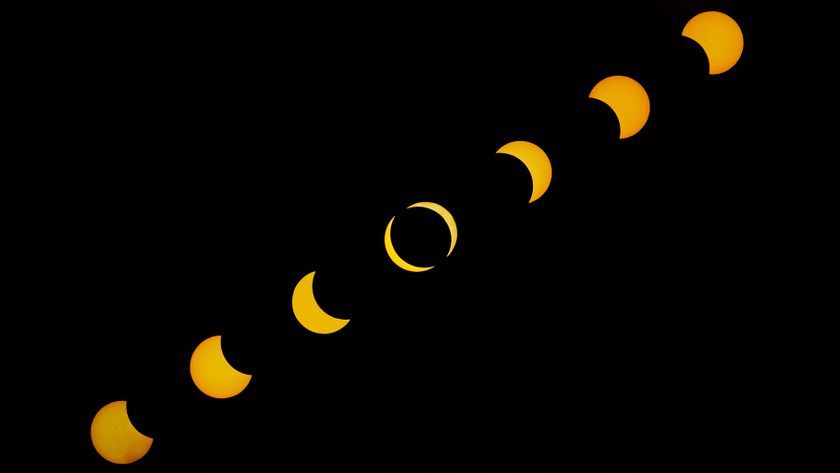Tiny Galaxy Bursting with Star Creation Is Spied by Hubble

A wisp of a galaxy is rich with new, blue-white young stars and primordial gas in this new cosmic photo from the Hubble Space Telescope.
The irregular dwarf galaxy is creating stars the size of our sun at a prodigious rate of about once a year. That's the same speed of star creation as our own Milky Way, but from a galaxy that is one-tenth the size.
The dwarf galaxy, called NGC 1140, is located about 60 million light-years away in the constellation Eridanus (the River). Scientists are interested in this type of galaxy because it harks back to the earliest galaxies in the universe, formed of mostly hydrogen and helium and building new stars at a frantic pace in a process called "starbursting." From those early galaxies, large modern star systems eventually blossomed — and by studying their contemporary counterparts researchers get a glimpse of galactic evolution. [See more amazing Hubble Telescope photos]
But alas, the celestial fireworks of NGC 1140 won't last forever.
"The vigorous star formation will have a very destructive effect on this small dwarf galaxy in its future," European Space Agency officials wrote in an image description.
As the galaxy's largest stars explode into supernovas, they will blow the star-creating gas away into space — "throwing out its potential for future stars," officials said. "NGC 1140's starburst cannot last for long."
Email Sarah Lewin at slewin@space.com or follow her @SarahExplains. Follow us @Spacedotcom, Facebook and Google+. Original article on Space.com
Get the Space.com Newsletter
Breaking space news, the latest updates on rocket launches, skywatching events and more!
Join our Space Forums to keep talking space on the latest missions, night sky and more! And if you have a news tip, correction or comment, let us know at: community@space.com.

Sarah Lewin started writing for Space.com in June of 2015 as a Staff Writer and became Associate Editor in 2019 . Her work has been featured by Scientific American, IEEE Spectrum, Quanta Magazine, Wired, The Scientist, Science Friday and WGBH's Inside NOVA. Sarah has an MA from NYU's Science, Health and Environmental Reporting Program and an AB in mathematics from Brown University. When not writing, reading or thinking about space, Sarah enjoys musical theatre and mathematical papercraft. She is currently Assistant News Editor at Scientific American. You can follow her on Twitter @SarahExplains.









